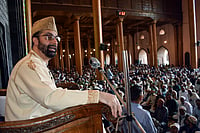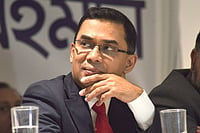While the Gaganyaan mission slated for 2025 will not have any woman astronauts, Indian Space Research Organisation (ISRO) chief S Somanath on Sunday said that women can definitely join Indian human space missions in the future as astronauts or scientists.
Somanath said that astronauts for the Gaganyaan mission, India's first human spaceflight mission, have been selected from among the Indian Air Force's (IAF) test fighter pilots and no women have been selected because there are no women test fighter pilots currently.
That would change when women test fighter pilots are available, said Somanath.
Somanath said that the second pathway for women to go to space is as scientists. Just like foreign space organisations that conduct scientific missions in space, India also aims to send astronauts to space for scientific research purposes.
Somanath told PTI, "No doubt about it...but we have to find out such possible (women) candidates in the future...Right now, the initial candidates are to be from Air Force fighter test pilots...they are a bit different category. Right now, we are not having women fighter test pilots. So, once they come, that is one route...Then, scientists will come as astronauts. So, at that time, I believe that more possibilities for women are there. Currently, possibilities are lesser because there are no women fighter test pilots."
While Somanath said that the Gaganyaan mission would be a short-term mission, his comment about the possibility of women going to space as scientists indicates that long-term missions with a scientific focus are on the cards. Indeed, in recent years, the focus of the Indian space programme has shifted from Earth-centric applications to purely scientific missions to understand the universe and explore celestial bodies.
Somanath also said that a female humanoid would be sent on the non-human test runs of the launch vehicle for the Gaganyaan mission next year.
So far, only one Indian national, Wing Commander (Retired) Rakesh Sharma, has been to space. In 1984, Sharma went to space as part of an India-Soviet Union joint mission and spent eight days aboard a Soviet space station. When then-Prime Minister Indira Gandhi asked him how India looked from up there, he famously replied, "Saare jahaan se achha (The most beautiful in the world)."
Earlier this week, Prime Minister Narendra Modi held a high-level meeting to review the Indian space programme and announced that India would have a space station by 2035 and humans on the Moon by 2040.
Earlier on Saturday, ISRO successfully tested the ejection systems of the Gaganyaan mission. Such systems come into place if astronauts have to eject from the spacecraft in any emergency situation. Following the ejection, the ejection module with astronauts splashes down on Earth and is recovered and taken to a safe location.


























